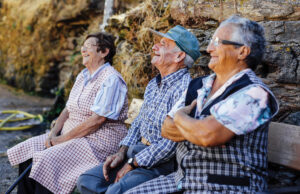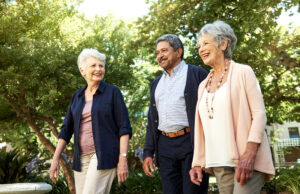Aging | Global Ageing News | Global Aging | January 21, 2016
Will a Drone Be Your Mother’s Next Care Assistant?
BY GlobalAgeing
by Geralyn Magan
Americans may be warming up to the idea of using unmanned aerial vehicles — or drones — to deliver Amazon packages or take pictures of unreachable places like remote mountain ranges or hurricane-decimated landscapes.
But what about using indoor drones to help older people get their hands on a bottle of medicine that’s in another room?
Sound like an outlandish idea? Naira Hovakimyan, a roboticist at the University of Illinois, isn’t laughing.
Hovakimyan recently received a $1.5 million grant from the National Science Foundation (NSF) to explore the possibility of using small drones to perform simple household chores.
NSF picked the right person.
Hovakimyan recently told The New York Times that she believes drones will become an everyday fixture — as ubiquitous as cell phones — in the homes of older people. Within a decade or two, she says, indoor drones will be reaching under the table to grab an object, cleaning chandeliers, and weeding the lawn.
Robots to the Rescue
Hovakimyan isn’t alone in her quest to use robotics and artificial intelligence to help older people live independently. Here are a few other glimpses into the future:
-
Robot companions: A rolling robot prototype named Robby from Seattle-based Hoaloha Robotics comes equipped with cameras, radar, microphone, speaker, and a computer tablet. Someday, Robby could be doing light chores for a human companion, while monitoring that person’s health, keeping track of medications, and connecting with health care providers.
-
Robotic cars: A new Toyota Motor Corporation research lab will soon be working to add artificial intelligence to cars so they become “elder-care robots” that help older people drive safer for longer.
-
Creating age-friendly cities: Eric Dishman, director of health innovation at Intel and CAST Senior Fellow in Technology Innovations, told The New York Times that China reached out to him a decade ago for help in developing aging services technologies. Now, an Intel team is collaborating with China’s Age Friendly City Initiative to install in-home sensors that are monitoring 100,000 people.
-
Smart Walker: The National Institutes of Health National Robotics Initiative just funded the development of a 4-legged robot designed to enhance mobility among older people. The user can “wear” the robot and receive powered assistance in walking. Or, the robot can walk alongside the person while carrying a load like groceries.
Fighting Loneliness
The ability of robots and other technology solutions to carry out chores or monitor health is impressive, of course. But some researchers want more. They’d like to develop technology that helps reduce loneliness and social isolation among older people and, in doing so, forestall cognitive decline.
The researchers don’t necessarily envision robots that will become a human’s best friend. Instead, researchers like Jeffrey A. Kaye, a neurologist at Oregon Health and Science University (OSHU), are seeking ways to use technology to help older people connect with their real-life family and friends. OSHU is a CAST University Member.
A recent study organized by Kaye found that face-to-face online conversations helped improve cognitive skills among healthy people in their 70s and 80s, as well as those with mild cognitive impairments.
“It is not possible to simply tell people to go out and get more friends, so the idea here was to provide a meaningful and frequent dose of social engagement,” said Kaye.

Recently Added
Translate »




